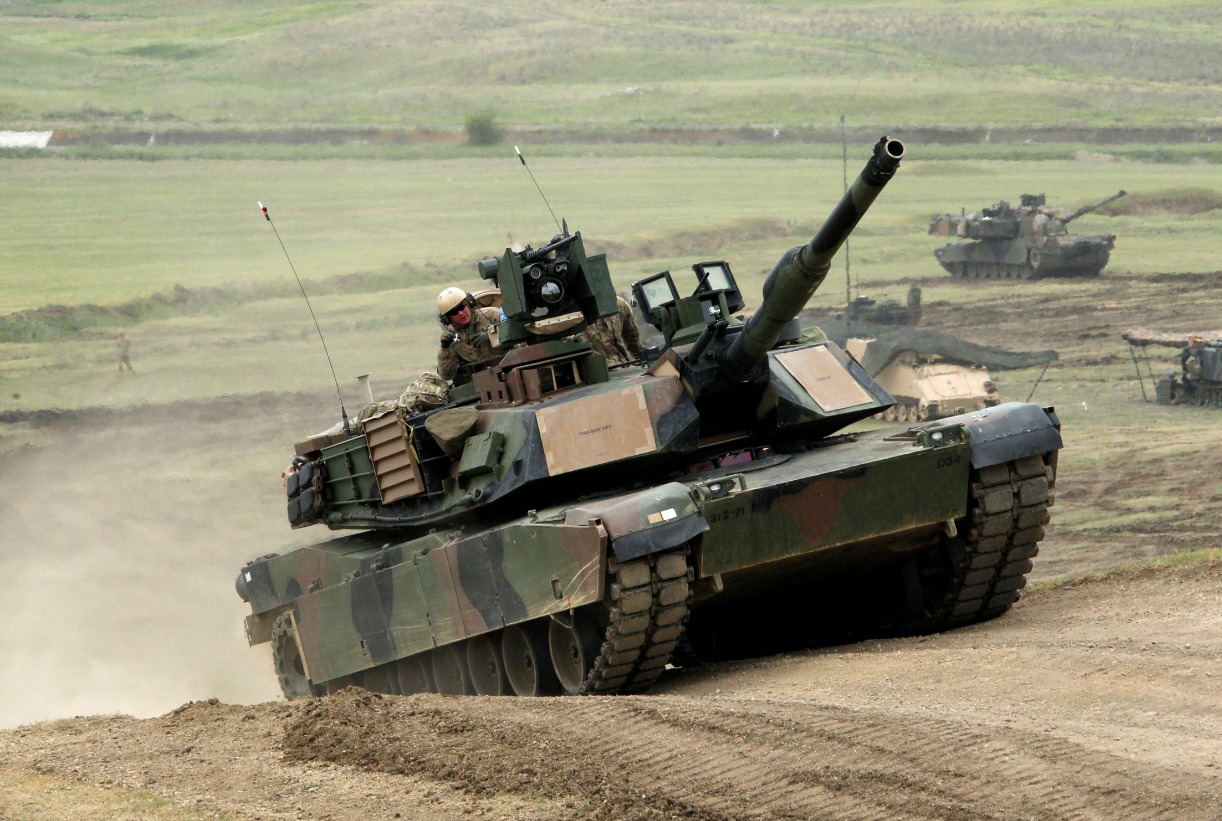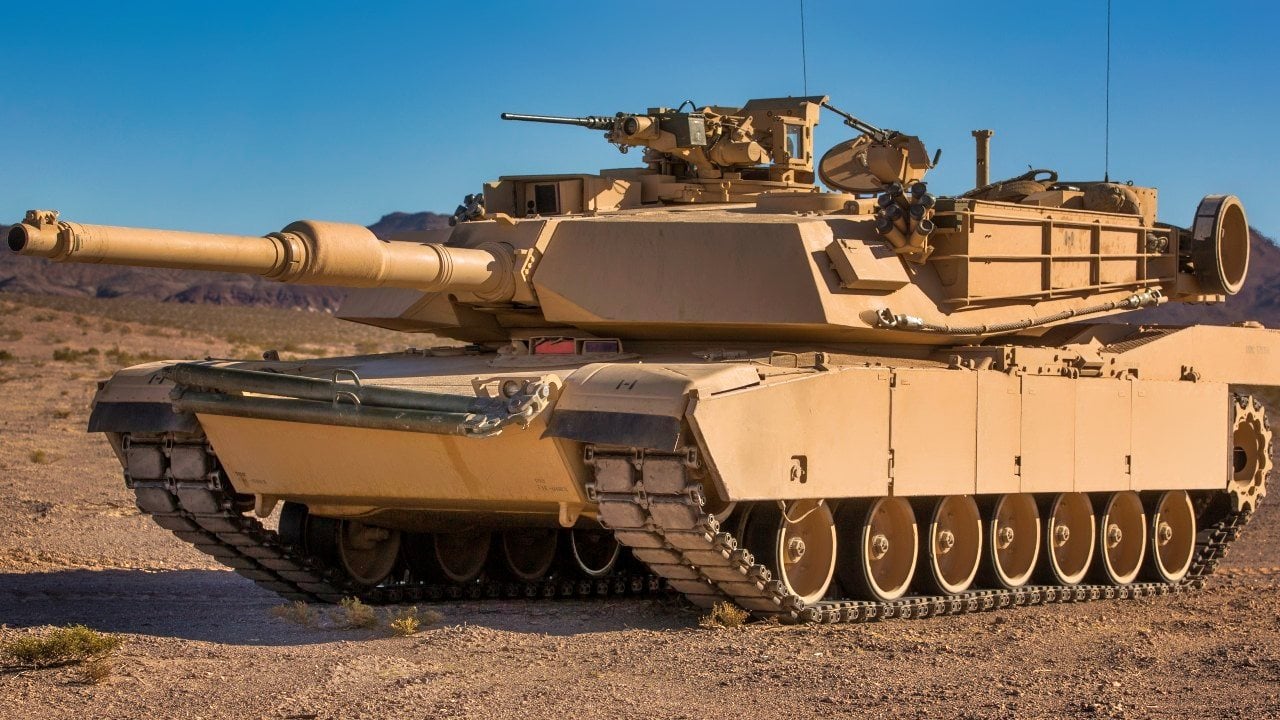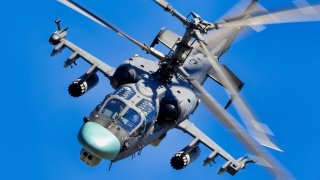Russia Is Using More 'Tank-Killer' Missiles Against Ukraine
Summary and Key Points: Russia is increasing the deployment of its Vikhr air-launched anti-armor missile in Ukraine, utilizing its high precision and destructive power. Produced by Kalashnikov, the Vikhr can be fired from Ka-52 "Alligator" and Mi28N helicopters, effectively targeting armored vehicles, infantry, and fortified positions.

-Developed in the Soviet era, the Vikhr boasts a maximum range of 10 km and employs a tandem shaped-charge/HEAT warhead.
-As both sides rely heavily on advanced anti-tank weapons and drones, Russia's expanded use of the Vikhr missile underscores its strategic shift in the ongoing conflict.
Russia is Expanding the Use of its Advanced Anti-Tank Weapon
As Russian troops massed on the border of Ukraine in late 2021 and early 2022, there was speculation that Ukrainian militia would have to confront Russian T-90 tanks with more than Molotov cocktails (aka gasoline bombs). When the Kremlin did mount its unprovoked invasion under the guise of a "special military operation," Ukraine was able to stop the Russian tanks with Western-made man-portable rocket launchers like the American FGM-148 Javelin, British NLAW, and Swedish AT4.
Those weapons proved deadly to the Russian tanks, and the Kremlin was forced to regroup.
Unmanned aerial systems (UAS) including loitering munitions and other drones have also been credited with destroying thousands of tanks on both sides. There are now reports that Russia may expand the use of its Vikhr air-launched anti-armor missile.
According to a report from Russian state media outlet Tass, the military conglomerate Rostec has claimed the Vikhr can deliver "phenomenal hit precision," where "one missile is one destroyed target." The ordnance is being produced by the Kalashnikov Company and can be employed from the Ka-52 "Alligator" attack helicopter, while the Mi28N helicopter will soon be armed with the upgraded Vikhr-1.
"The missiles are effective in any time of the day and in bad weather. The engagement of Vikhr is expanding in the special military operation. They are used to destroy armor in shelters or in motion and strike at Ukrainian firing points and camouflaged and protected objects," Rostec stated.
The Vikhr in the Crosshairs
Development of 9K121 Vikhr (NATO reporting name AT-16 Scallion) began in the Soviet Union in the mid-1980s but wasn't presented until after the dissolution of the Soviet Union.
The laser-beam-riding anti-tank missile has a maximum daytime range of 10 km (6 miles) but is most effective at around 800 meters (half a mile). It has a maximum speed of 800 km/h (500 mph), while its tandem shaped-charge/High-Explosive Anti-Tank (HEAT) warheads can reportedly penetrate up to 750mm of homogeneous armor, behind ERA.

It is also equipped with a proximity fuse, which enables area-effect that allows it to target non-armored entities, including infantry, forward positions, buildings, and even helicopters – making it a multi-purpose missile.
A laser beam directs the missile to the target, and it employs an automatic sight until equipped with a video monitor for use in the daytime, and infrared for night. Both target tracking and missile control of the Vikhr are automated. According to Army Recognition, the Vikhr has a hit probability of up to 95% against stationary targets and up to 80% against moving targets – but "it is important to note that this missile's accuracy diminishes over long ranges due to the spread of the guiding laser beam."
A dozen Vikhr air-to-ground missiles can be carried on the Ka-52.
Author Experience and Expertise: Peter Suciu
Peter Suciu is a Michigan-based writer. He has contributed to more than four dozen magazines, newspapers, and websites with over 3,200 published pieces over a twenty-year career in journalism. He regularly writes about military hardware, firearms history, cybersecurity, politics, and international affairs. Peter is also a Contributing Writer for Forbes and Clearance Jobs. You can follow him on Twitter: @PeterSuciu. You can email the author: [email protected].
Image Credit: Shutterstock.


